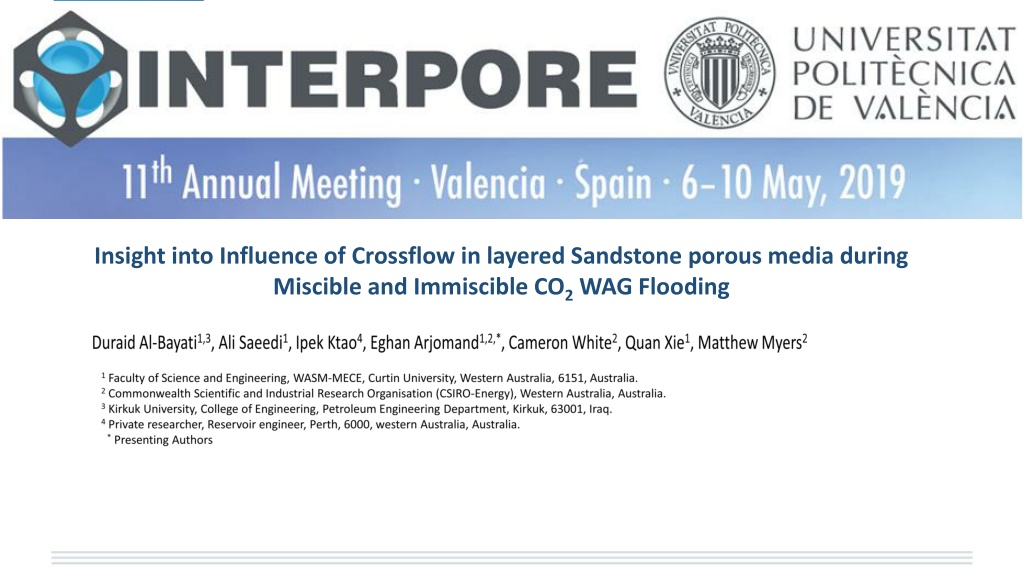Influence of Crossflow in Layered Sandstone Porous Media During CO2 WAG Flooding
Reservoir heterogeneity significantly impacts oil recovery processes and flood conformance. Research findings show that Miscible WAG outperforms Immiscible WAG, with crossflow affecting sweep efficiency. Increased permeability ratio leads to channelling of CO2, affecting oil saturations and recovery. Crossflow in layered media has a negative impact on ultimate oil recovery by working against dominant active forces.
Download Presentation

Please find below an Image/Link to download the presentation.
The content on the website is provided AS IS for your information and personal use only. It may not be sold, licensed, or shared on other websites without obtaining consent from the author. Download presentation by click this link. If you encounter any issues during the download, it is possible that the publisher has removed the file from their server.
E N D
Presentation Transcript
Insight into Influence of Crossflow in layered Sandstone porous media during Miscible and Immiscible CO2 WAG Flooding
Motivation Heterogeneity is a fact of life in almost all hydrocarbon reservoirs discovered worldwide. In the petroleum industry, reservoir heterogeneity may refer to a variation of permeability, porosity, thickness, saturation, wettability and other rock characteristics. Stratification and reservoir permeability heterogeneity have long been recognized as the critical aspects affecting reservoir performance and the oil recovery process. Reservoir heterogeneity impacts on flood conformance and sweep patterns during an EOR process by intensifying fingering and channelling of the injected fluid resulting in early breakthrough and reduced sweep efficiency. Recovery from heterogeneous layered porous media is influenced by the crossflow between the layers that may occur perpendicular to the main flow direction (often horizontal).
Results Miscible WAG perform better than Immiscible WAG whether crossflow allowed or prevented between layers. In contrast to our previous published finding regarding the positive contribution of crossflow to oil recovery during continuous gas injection, WAG displacement showed a negative influence of crossflow. With increasing heterogeneity the more channelling are expected and preventing crossflow during WAG flooding works against it.
Conclusions Increasing permeability ratio a considerable channelling of CO2 into the high permeability layer leaving the low permeability layer touched partially, implying that heterogeneity in vertical direction indeed significantly affects remaining oil saturations, thus oil recovery. The degree of heterogeneity seems to strongly influence the effectiveness of cross-flow during CO2 EOR with the oil recovery decreases as the permeability ratio (PR) between the two half plugs included in every samples increase. Cross-flow in the layered sample has a negative impact on the ultimate oil recovery. Cross-flow works against the influence of the dominant active forces. For instance, in non-communicating layers, the dominance of viscous forces prevailed while there is a preferential flow path exists in flow in communicating layers.























